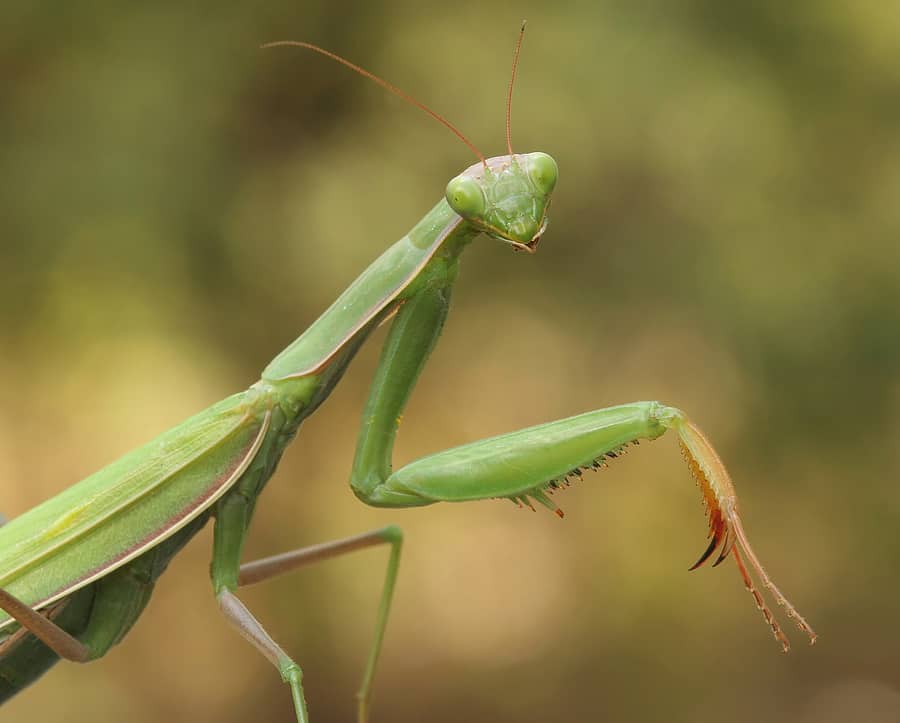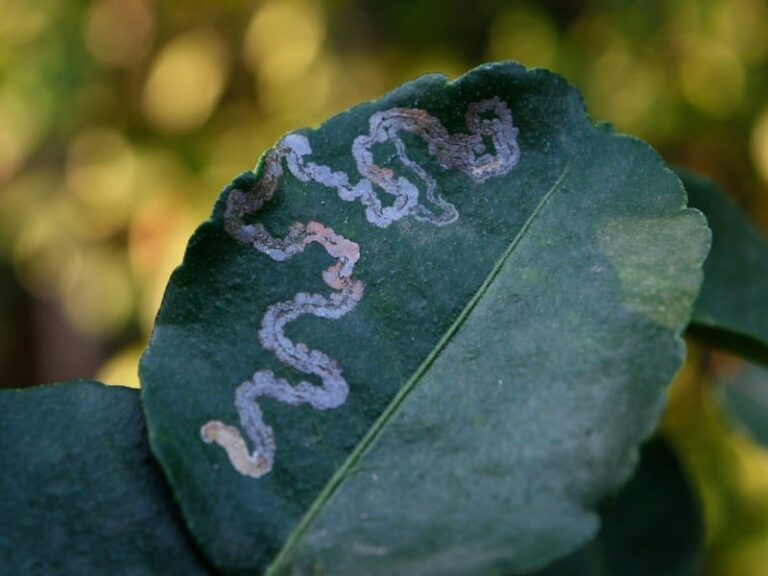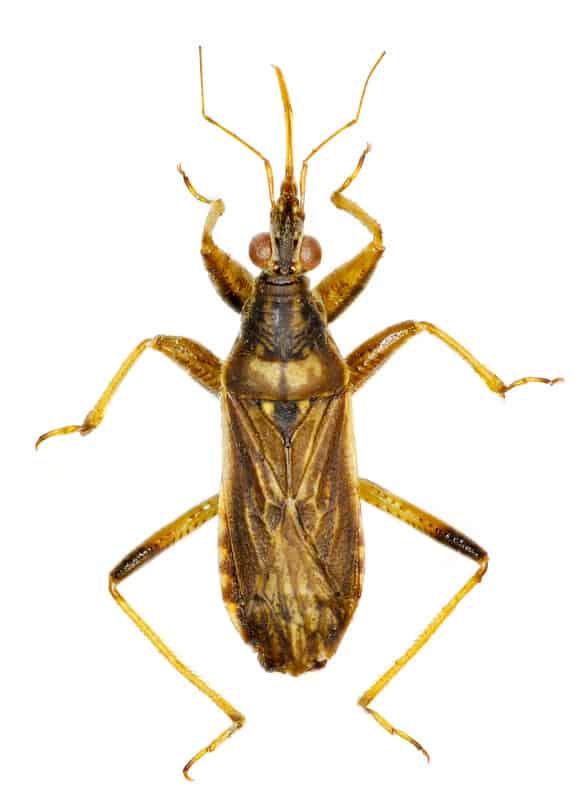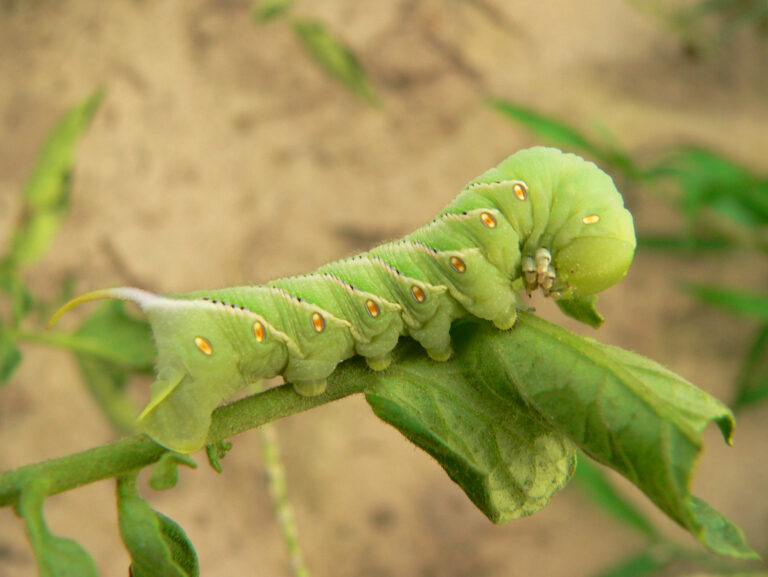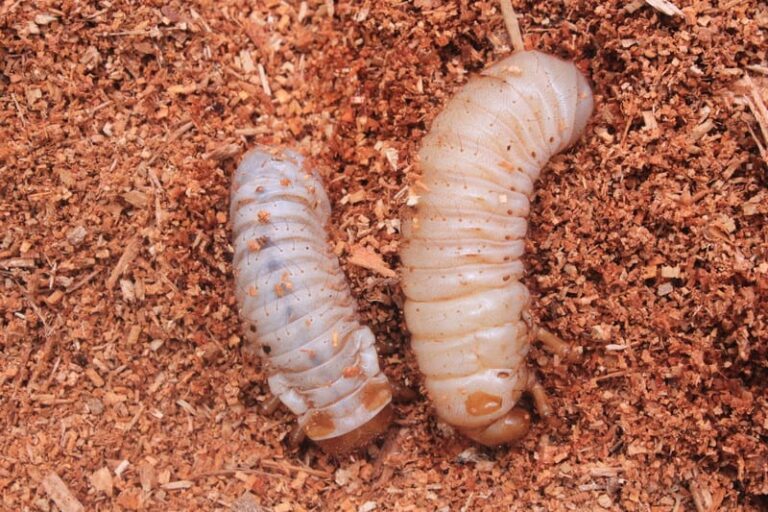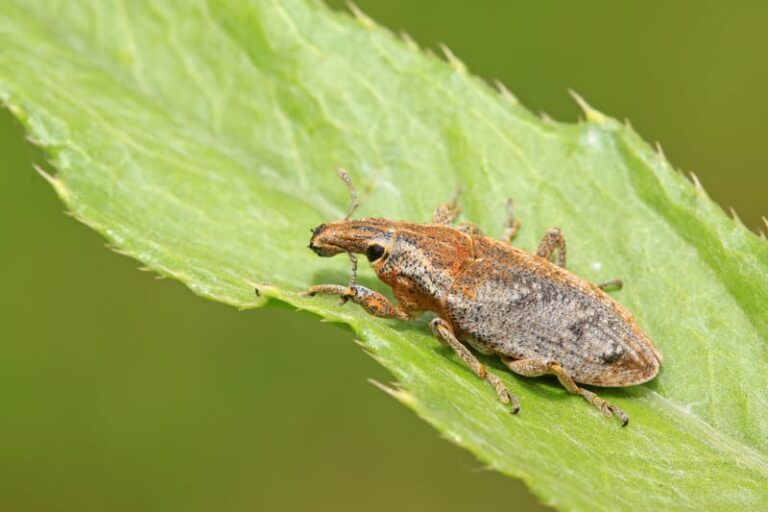Praying Mantid Beneficial Insect
Praying mantids (plural praying mantis) are mostly beneficial insects.
Praying mantids eat aphids, asparagus beetles, caterpillars, Colorado potato beetles, earwigs, leafhoppers, Mexican bean beetles, and squash bugs. Praying mantids also eat beneficial insects, butterflies, and bees.
The praying mantid is a beneficial insect sometimes known as the “destroyer of other insects.” Praying mantises eat an array of pest insects—up to 21 different species including aphids, leafhoppers, mosquitoes, beetles, caterpillars, spiders, moths, and grasshoppers.

Mantises do not distinguish between pest insects, neutral insects, and other beneficial insects; mantises are prey insects and will eat just about anything they can capture—including other mantises.
There are as many as 1800 species of praying mantid. They commonly grow from 2½ to 4 inches long, but some Asian species can grow up to 12 inches long.
Praying mantids can be found throughout North America. There are about 20 native species and several introduced species. Praying mantises are also found in Europe and Asia.
The scientific name of the praying mantid is Tenodera aridifolia sinensis and Mantis religiosa.
Good Products for Pest and Disease Control at Amazon:
- Garden Safe Snail and Slug Bait
- Bonide Sulfur Fungicide
- Monterey BT Caterpillar Killer
- Neem Bliss 100-% Cold Pressed Neem Oil
- Safer Brand Insect Killing Soap
- PyGanic Botanical Insecticide
How to identify the praying mantid
Adult praying mantid
Praying mantids are large, slender insects light brown or green up to five inches long with enlarged front legs and prominent eyes. Praying mantids have wings, but fly only to mate. The adult praying mantid has a green or brownish long body with papery wings and enlarged front legs that are adapted for grasping prey. The adult praying mantid is commonly 2½ to 4 inches long.
Praying mantid nymphs
The praying mantid nymph is about ⅛ inch long when it emerges from the egg. The nymph looks like a small adult except it does not have wings. The nymph feeds on aphids, beetles, bugs, leafhoppers, flies, bees and wasps, caterpillars, butterflies, and each other. Nymphs molt or shed their exoskeleton several times before they reach full size.
Praying mantid eggs
An egg case called an ootheca is a hard foam-like, straw-colored mass or case that contains 100 to 300 eggs. The case can be found attached to twigs or the underside leaves late summer into spring. Wingless hatchlings emerge in spring and begin to feed on insects smaller than themselves, usually aphids. As nymphs grow to adults they feed on progressively larger insects.
Praying mantid life cycle
Praying mantises go through three stages of metamorphosis in the course of one year: egg, nymph, and adult. Female praying mantids lay eggs in spongy, grayish egg cases they attach to stems or twigs. Each case contains 50 to 400 eggs. Young mantids—they look like small adults but do not have wings–hatch in spring and begin feeding immediately. A mantid nymph emerges from its egg case in late spring or early summer; each egg case contains 100 to 400 eggs. The nymph and adult look the same, except the nymph is smaller and has no wings.
As a mantid grows it molts or sheds its exoskeleton 5 to 10 times until it is fully grown. The adult will live on through the summer and autumn until it is killed by cold weather; in warm-winter regions, mantids may live on in a state called diapause—a biological quiet period.
Female mantids deposit eggs in autumn and then die about three weeks later; the eggs hatch the following spring. Egg cases are hardy and can survive in sub-zero temperatures. Praying mantids thrive in temperate climates that average 70° to 80°F and 60 to 65 percent humidity.
There is one generation of praying mantids each year. Mantids live for 10 to 12 months.
Target insects
Praying mantids eat aphids, asparagus beetles, caterpillars, Colorado potato beetles, earwigs, leafhoppers, Mexican bean beetles, and squash bugs. Praying mantids also eat beneficial insects, butterflies, and bees.

Praying mantid feeding habits
Praying mantids do not stalk their prey; they ambush their prey. They sit and wait for passing insects. They grip their prey with their enlarged forelegs and eat them live.
Praying mantid nymphs and adult mantises are ambush predators. They stand perfectly still blending into their surroundings then catch their prey with their grasping, spiked forelegs. They hold the prey with one leg between the head and thorax, and the other on the abdomen. They eat their prey alive often starting with the head first and then carrying on with the body in pieces.
How to attract praying mantids to the garden
Attract praying mantids to the garden by planting shrubs and perennials that provide strong stems and branches to which praying mantids can shelter and attach their egg cases. Praying mantids do not consume pollen or nectar, but plants that produce pollen and nectar will attract insects that mantids eat.
Using praying mantises for insect control
One hundred praying mantises or about will rid an average garden of most pest insects in short order. Mantises follow the food supply, so once a garden is rid of pests most mantises will move on.
One egg case can supply enough mantises for a small garden; three egg cases provide enough mantises for 5,000 square foot garden. The number of mantises in a garden will decrease as the food supply decreases.
Praying mantid egg cases can be purchased. Keep them refrigerated until you are ready to place them in the garden. Attach the egg cases to twigs or plant stalks or branches until they hatch.
Tie egg cases to twigs or branches or place them in a container with holes large enough for nymphs to escape; this will protect egg cases from birds and rodents.
Related articles:
Vegetable Garden Beneficial Insects
Vegetable Garden Organic Pest Control
Vegetable Garden Diseases Problem Solver
Vegetable Garden Organic Weed Control
Garden Planning Books at Amazon:

